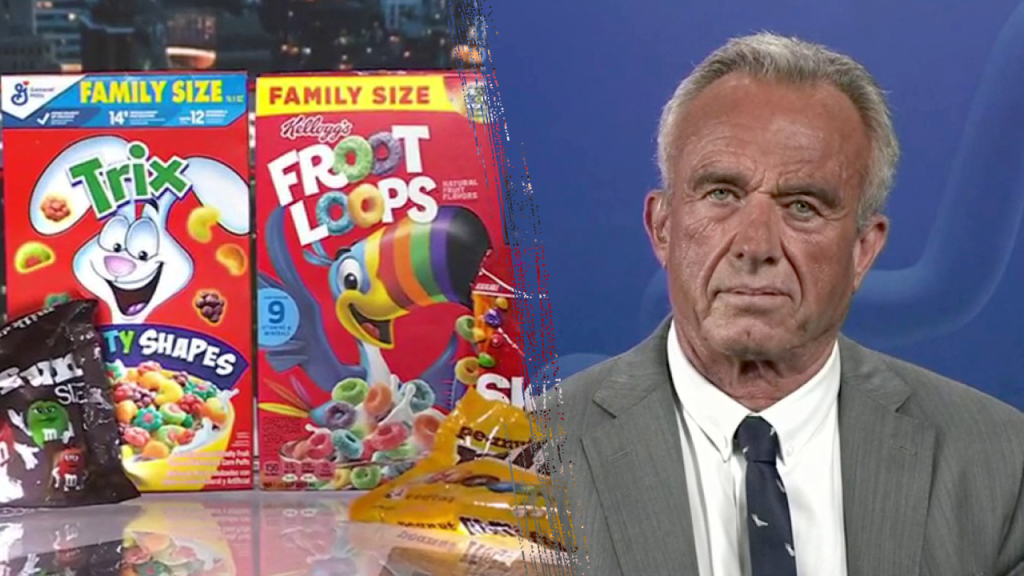In a significant move to address America’s chronic health crisis, U.S. Health and Human Services Secretary Robert F. Kennedy Jr. announced a plan aimed at phasing out synthetic food dyes, particularly those made from petroleum. During a press conference in Washington, D.C., on April 22, 2025, RFK Jr., flanked by key health officials including National Institutes of Health Director Jay Bhattacharya and Food and Drug Administration Commissioner Marty Makary, highlighted the alarming rise in chronic diseases among the American population. This initiative not only reflects a commitment to improving food safety but also emphasizes the pressing need to reassess what Americans are consuming in their diets.
| Article Subheadings |
|---|
| 1) Announcement of the Phase-Out Plan for Synthetic Dyes |
| 2) Background on Synthetic Food Dyes and Health Concerns |
| 3) Regulatory Actions Taken by the FDA |
| 4) Broader Implications for Public Health |
| 5) The Ongoing Debate Over Food Safety and Ingredients |
Announcement of the Phase-Out Plan for Synthetic Dyes
During the press conference, RFK Jr. indicated that the ban on synthetic food dyes is merely the initial step in a larger initiative to enhance food safety. He emphasized the significance of scientific research in guiding this effort, stating, “We’re going to do real science, and we’re gonna do science precisely on the issues that American[s] care about.” The focus is on ensuring that children consume food that is free from harmful substances. RFK Jr. aims to revamp not just the food supply but also the overall perception of food quality across the nation. His comments reflect a deep concern for the nutrition that American children receive daily.
Background on Synthetic Food Dyes and Health Concerns
Synthetic food dyes have long been a controversial topic within the realm of food safety. These dyes, often derived from petroleum, are frequently used to enhance the visual appeal of food products. However, emerging studies suggest that several synthetic dyes may be linked to adverse health effects, including hyperactivity in children and potential cancer risks. The increasing awareness of these health implications has prompted regulators to reconsider their safety in the food supply. As the situation stands, RFK Jr. noted that “the food our kids are eating today is not really food. It’s food-like substances,” highlighting the urgent need for reform.
Regulatory Actions Taken by the FDA
The FDA’s recent decisions reflect a growing commitment to reassess and regulate food ingredients critically. Earlier this year, the agency prohibited the use of Red Dye No. 3 due to its associations with cancer in animal studies. Following this, the FDA and HHS plan to revoke the authorization for two additional synthetic dyes, Citrus Red No. 2 and Orange B, in the coming months. By the end of 2026, the FDA intends to remove six more synthetic dyes, including Green No. 3, Red No. 40, and Yellow No. 5, from the market entirely. This systematic approach indicates a responsive regulatory framework aiming to safeguard public health.
Broader Implications for Public Health
The ramifications of these regulatory changes extend far beyond food aesthetics. With mounting evidence suggesting a correlation between food dyes and various health issues, the initiative to phase out synthetic options represents a pivotal shift towards enhanced food safety standards. RFK Jr. pointed out that the U.S. now faces the highest chronic disease burden globally, with statistics revealing that 60% of Americans suffer from chronic illnesses today compared to just 3% during his uncle’s presidency. This alarming trend emphasizes the necessity for dietary reform and proactive health measures aimed at reversing these public health crises.
The Ongoing Debate Over Food Safety and Ingredients
As the discussions surrounding synthetic food dyes unfold, a broader debate regarding food safety and ingredient transparency is underway. Advocates for reform stress the importance of making informed choices about what is consumed, particularly regarding children’s nutrition. RFK Jr. raised a comparison between the ingredients used now and two decades ago, stating that many chemicals found in products like Froot Loops are banned in countries globally. This disparity raises questions about regulatory practices and the need for adherence to stricter health standards in the U.S. market.
| No. | Key Points |
|---|---|
| 1 | The U.S. plans to phase out synthetic food dyes, reflecting concerns over health impacts. |
| 2 | FDA’s actions include banning Red Dye No. 3 and revoking authorizations for several other synthetic dyes. |
| 3 | There is a growing awareness of the negative health effects associated with synthetic food dyes. |
| 4 | Statistics show a significant increase in chronic diseases among U.S. citizens over the decades. |
| 5 | The debate continues regarding food safety and the need for greater transparency in food labeling. |
Summary
The initiative led by Robert F. Kennedy Jr. to ban synthetic food dyes marks a crucial step towards improving public health and enhancing the quality of the food supply in the United States. As the FDA takes significant regulatory actions, the implications for dietary practices and children’s health are profound. This movement underscores the urgent need for informed consumer choices and fostering a food environment that prioritizes safety and well-being.
Frequently Asked Questions
Question: Why are synthetic food dyes under scrutiny?
Synthetic food dyes are being scrutinized due to potential health risks, including links to behavioral issues in children and cancer in animal studies. The ongoing examination by health officials aims to ensure safer food options for consumers.
Question: What steps is the FDA taking regarding food dyes?
The FDA is banning certain synthetic food dyes such as Red Dye No. 3 and plans to revoke authorization for additional dyes, aiming to phase out the use of harmful chemicals in food products over time.
Question: What is the broader impact of the synthetic dye ban?
The ban on synthetic dyes is expected to lead to healthier food choices and improved public health outcomes, particularly as a response to rising rates of chronic diseases among Americans.


